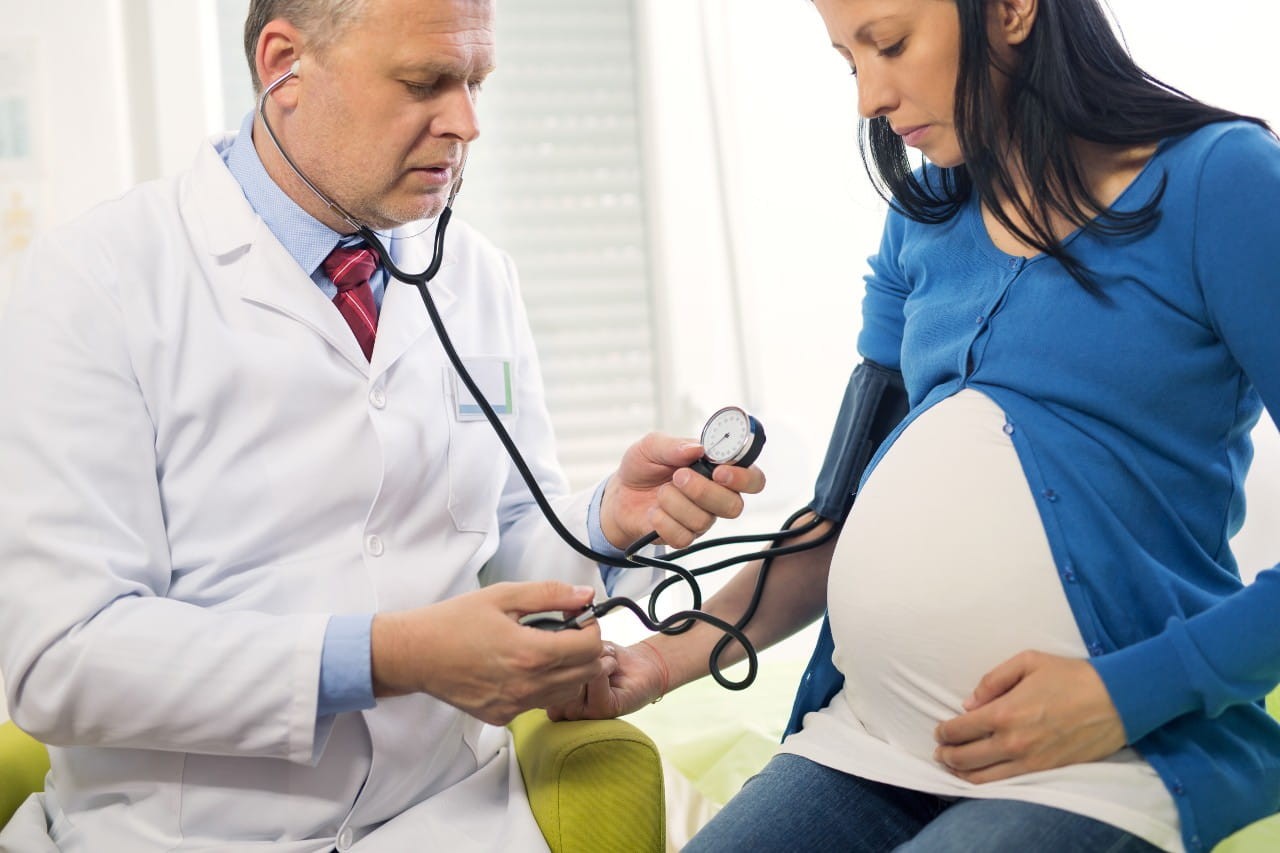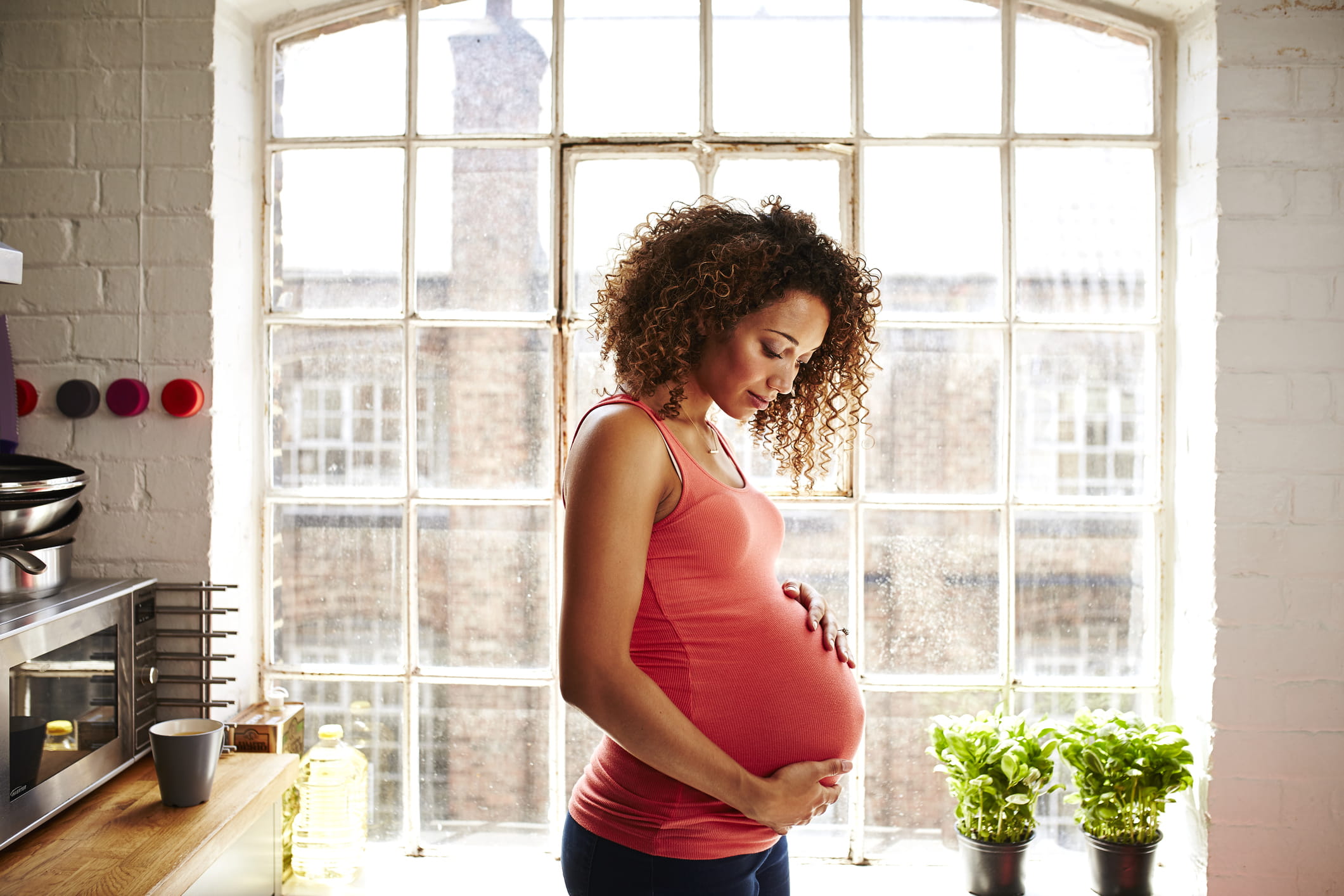Preeclampsia is a serious condition that affects the blood vessels of some women during pregnancy. The first sign of preeclampsia may be high blood pressure. “If not properly diagnosed and managed, this condition can lead to liver and kidney damage and other serious complications,” explains Joseph King, M.D., an OB-GYN with Partners in Women’s Health.
Causes of preeclampsia
During pregnancy, new blood vessels develop to support the growth and development of your baby. However, in women with preeclampsia, these blood vessels don’t grow or work as expected. When this happens, blood circulation can decrease in the placenta, which nourishes the baby during fetal development, causing preeclampsia.
Risk factors for preeclampsia
Women over 35, or with Black or Native American heritage, may have an increased risk for developing preeclampsia during pregnancy. In some cases, prior medical conditions can also increase your risk for developing preeclampsia during pregnancy, including
- Certain autoimmune disorders
- Chronic (long-term) hypertension
- Kidney disease
- Obesity
- Preeclampsia in a prior pregnancy
- Type 1 or type 2 diabetes
Other risk factors that can increase your risk for preeclampsia include:
- Complications in a prior pregnancy
- A family history of preeclampsia
- A first pregnancy with your current partnerA multiple gestation pregnancy, such as twins
- Used in vitro fertilization to get pregnant
- Waited 10 or more years between pregnancies
How to reduce your risk for preeclampsia
Even if you’ve had preeclampsia in a past pregnancy, you can take measures to reduce your risk of developing this condition in your current pregnancy. If you have one or more of the risk factors above, your doctor may recommend you take these steps:
- Daily low-dose aspirin. Your doctor may recommend taking an 81mg aspirin each daily after 12 weeks of gestation.
- Healthy lifestyle. Eating a healthy, balanced diet while pregnant can help reduce your risk of developing many gestational conditions. Staying physically active can also help you stay healthy during your pregnancy. Speak with your doctor about what they recommend for your situation.
- Managing other health conditions. “Because other health conditions – such as diabetes, kidney disease and autoimmune disorders – can increase your risk for developing preeclampsia, it’s important to work closely with your doctor to keep these conditions in check while you’re pregnant,” explains Dr. King.
Early signs of preeclampsia
If you are pregnant, you may notice early signs of preeclampsia on your own, including:
- Nausea
- Pain in the upper right side of the abdomen under the ribcage
- Headache not relived by acetaminophen.
- Shortness of breath
- Sudden weight gain (for example, a weight gain of two to five pounds in one week)
- Swelling (edema) of the hands and face that comes on suddenly
- Changes in vision, blurred vision, seeing spots, or sensitivity to light
- Vomiting
In addition, your obstetrician may discover other signs of preeclampsia, including:
- High blood pressure (hypertension)
- High levels of liver enzymes
- High levels of protein in the urine (proteinuria)
- Low levels of blood platelets
Complications related to preeclampsia
If you have preeclampsia and do not work with your doctor to closely manage the condition, serious – even fatal – results can develop for you or your baby. Complications related to preeclampsia can include:
- Fetal growth restriction (inability for baby to develop normally in the womb)
- Pre-term (early) birth
- Placental abruption (placenta separates from the wall of the uterus during pregnancy)
- Hemolysis, elevated liver enzymes and low platelet count (HELLP) syndrome (serious lifelong condition that can affect the blood, liver and other organs)
- Eclampsia (condition that causes seizures or coma)
- Damage to the kidneys, lungs, heart, eyes or liver
- Cardiovascular disease.
Diagnosis of preeclampsia
Your obstetrician will use your blood pressure reading to first diagnose preeclampsia. If you have high blood pressure, your doctor may order additional tests to confirm the diagnoses, including:
- Blood tests
- Non-stress test (checks your baby’s heart rate when your baby moves)
- Ultrasound
- Urine test
Treatment for preeclampsia
Depending on the severity of your preeclampsia, the stage of your pregnancy, your overall health and other factors, your doctor may recommend some combination of the following treatments to help manage this condition:
- Early delivery. Your health care provider will determine when your delivery will occur based on the signs and symptoms of your preeclampsia. With mild preeclampsia delivery may occur as late as 34-37 weeks, but you will be delivered sooner if you show symptoms or signs consistent with preeclampsia with severe features. Your health care provider will let you know if you need a Cesarean section (C-Section) or if you can deliver vaginally.
- Medication. Your doctor may recommend one or a combination of medications to help manage your preeclampsia. For example, high blood pressure medicine can help lower high blood pressure; magnesium to reduce your chance of having a seizure; and corticosteroids can help your baby’s lungs develop more quickly in case of an early delivery.
- Ongoing monitoring. Additional ultrasounds to monitor your baby’s growth, weekly non-stress tests (also known as NST) to monitor your baby’s heart rate and well-being, and weekly appointments to monitor your blood pressure will be necessary. Your health care provider may also ask you to check your blood pressure at home each day.
What to expect Postpartum?
“After you deliver your baby, preeclampsia should resolve,” explains Dr. King. “However, your care team will continue to closely monitor your blood pressure while you’re in the hospital post-delivery.
Your health care provider may want you to return for a blood pressure check soon after you are discharged from the hospital so they can monitor if your preeclampsia has resolved. It is important for your health to keep this postpartum appointment.
First developing preeclampsia after birth
There is a small percentage of women who may also develop postpartum preeclampsia after giving birth. You should contact your OB/GYN if you experience any sign or symptoms of preeclampsia even after you have delivered your baby.
Make an appointment
If you think you may have preeclampsia or need help managing this condition, schedule an appointment with a Riverside Health provider.



